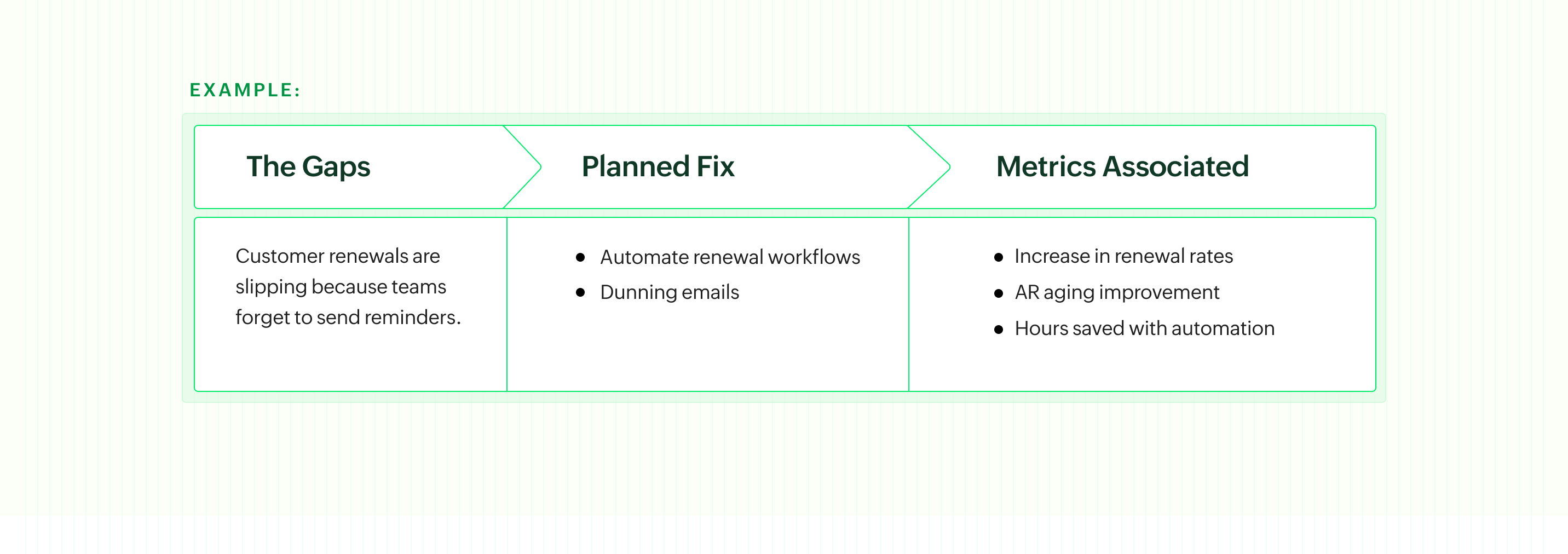- HOME
- Enterprise
- Identifying and fixing revenue leakage with Q2C automation
Identifying and fixing revenue leakage with Q2C automation

Revenue leakage is the silent loss of business income that happens when businesses fail to collect what they rightfully earned and can potentially earn, or spend more than they have to or rightfully owe.
For enterprises with ever-scaling operations, revenue is highly vulnerable to leakage due to the complexity of pipelines and processes. While the base reasons are similar, the factors vary from industry to industry. Here are a few examples.
- Retail & ecommerce: 30-day returns, vendor disputes, shelf lives for perishables, and even minor package damage in luxury items chip away at margins.
- SaaS: The risks lie in mismanaged renewals, proration errors, and inflexible pricing.
- Services (like financial consulting): Contract misalignment and poor hand-offs between sales and finance can create huge gaps.
Complete elimination is highly unlikely and an idealistic approach. So, the goal is to minimize leaks and gain control. And, one of the most effective ways is quote to cash (Q2C) automation.
Fixing revenue leakage with Q2C automation
And how Zoho Billing can secure leaks at every step:
Plugging leaks in invoicing processes
There are cases where there's a need to edit invoices manually, re-add product details every time an invoice is created, switch currencies for customers across the globe, or chase overdue payments without reminders. All of them slow down collections.
For example, every step in invoicing is taken care of by Zoho Billing to reduce revenue leaks. With it, you can:
- Auto-apply product details, taxes, and currencies.
- Route invoices for approvals automatically both internally (heads) and externally (customers).
- Create invoices with embedded “Pay Now” buttons.
- Schedule reminders as often as you see fit.
- Automatically convert quotes to invoices post-customer approval.
- Reducing manual intervention for monotonous tasks
While all huge organizations have long moved on from using paper and pen, spreadsheets are the modern day equivalent. They are not built for enterprise-level financial management or any scaling organization for that matter. Not to mention they are highly error-prone and time-consuming which impacts compliance and efficiency.
Promptly charging for unbilled revenue
Mid-cycle changes, add-ons, and customer expenses would require you to bill on top of your customers' regular payments. When these are missed, they not only mess with your revenue but will create confusing gaps.
Zoho Billing makes sure you don't forget the unbilled charges. It reminds and prompts you at various stages to bill your customers like when you:
- Make changes in a subscription plan.
- Are about to raise a new invoice for a project or service.
This ensures no unbilled revenue goes unpaid. Proration also occurs if the customers upgrade mid-cycle.
Align contract planning with execution:
You analyze and sit through multiple meetings, get all necessary approvals, and finalize a fool proof contract that enforces strict payment terms, credit limits and the like. But sometimes, all that is lost when it comes to actual implementation.
The culprit: Human dependent processes or legacy systems with huge limitations in terms of capabilities. They cause silos and make it hard to align processes.
Zoho Billing lets you configure customer-level payment terms. The system automatically enforces due dates, flags overdue invoices, and provides an AR aging summary for instant visibility.
Putting an end to credit policy abuses
Credits are great ways to retain huge customers, but the cap has to be strictly maintained in order to dodge high revenue leakage. If left unchecked, it could lead to product or service theft with or without the knowledge of your customers.
With Zoho Billing, set up credit limits at the customer level and control what happens when the limit is reached with just a few button clicks.
Carefully managing pricing experiments
While pricing experiments can boost sales, CFOs and finance leaders must carefully weigh their long-term impact. They should ensure that the new rollouts don't cause margin erosion or customer confusion. Thoughtful planning and ongoing tracking helps support growth initiatives while not leaking revenue due to inconsistencies.
Examples include avoiding overlap of discounts and ensuring prices are consistently displayed across platforms (website, invoice, promotional emails, and the like).
Bringing real-time visibility
This is the most important thing that should happen at all touchpoints. Reports shouldn't wait until your teams sit and gather all the data and build charts. The system should show all the essential metrics in just a few clicks. This ensures leaks are detected early, making it easier to identify the cause and resolve it quickly.
Zoho Billing provides customizable dashboards where the leaders can see the live status of receivables, revenue, ARR, or other metrics at a glance.
Where to start: A simple process to solve revenue leakage
Process reviews for better clarity
Before thinking about the systems, it's important to analyze the processes independently for gaps. For example, a business may provide customers 45 days to pay but plans cash flows assuming collections happen within 30 days.
So being aware of all the revenue pipelines and the touchpoints is crucial to understand how the money comes in and the path it goes through before getting realized.
Identifying the IT system gaps
Once leak-proof processes are set, the next step is to find where the systems are falling short within each touchpoint. Sitting with the teams and connecting with end users will give you helpful insights that would otherwise require a lot of time.
Identify opportunities for automation
Finance cannot tolerate errors. To improve efficiency at scale, find opportunities to automate repetitive and monotonous tasks and better utilize your teams' time.
Calculate effort needed and resource availability for change implementation
The next step is analyzing the need for change implementation. This doesn't always have to be huge like migrating to a whole new platform, it could be a list of fixing minor issues with existing systems, or allocating resources better to fix high impact leak
Effectiveness measurement
Analysis, as always, is non-negotiable.
A simple framework to come up with relevant metrics would be like:

Digitization and automation as the way forward
Hunting for revenue leaks in enterprise systems may feel like looking for a needle in a haystack. But technology, including platforms like Zoho Billing, easily bring visibility to the leaks. Once they are identified, implementing a foolproof strategy (human touch) is the next step. Together, they should ensure leaks don't happen in that touchpoint again.
DATOMS, an IoT solutions provider, cut down their revenue leakage by leveraging Zoho Billing's advanced tracking features and high flexibility in collections process. If you'd like to do the same and learn how Zoho Billing can safeguard your organizations, revenue, connect with our experts.
